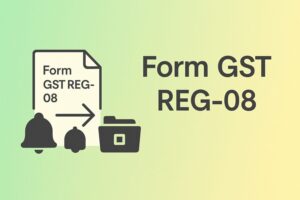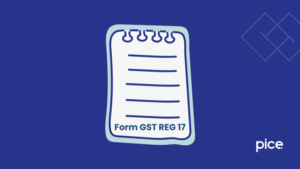Types of GST Return Due Date Explained
- 28 Oct 25
- 12 mins
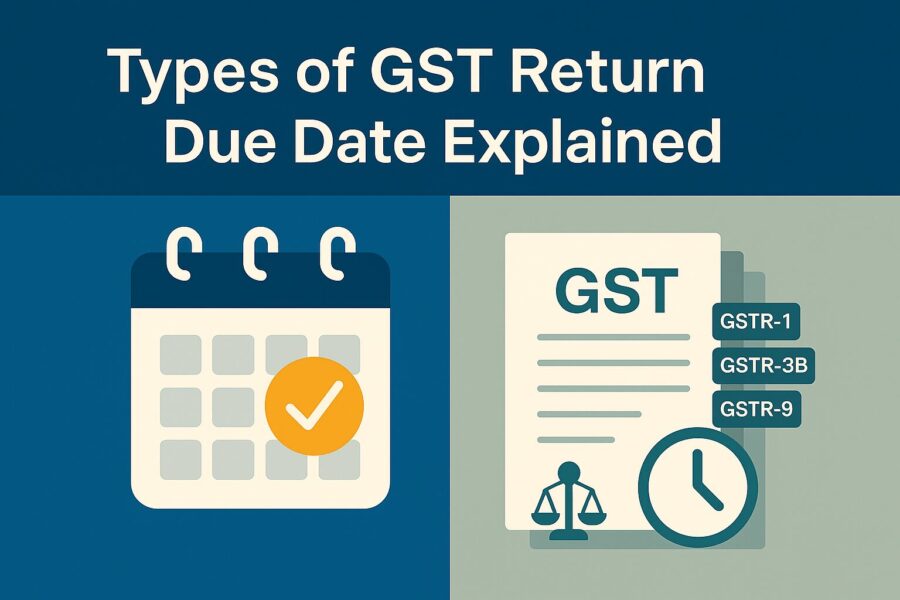
Types of GST Return Due Date Explained
Key Takeaways
- There are 13 main types of GST returns in India, including GSTR-1, GSTR-3B, and GSTR-9, each serving a specific compliance purpose.
- Timely GST return filing helps avoid penalties, with due dates ranging from the 10th to 31st of the month, depending on the return type.
- Businesses must file GSTR-1 for outward supplies and GSTR-3B for summary tax details, while composition taxpayers file GSTR-4 annually.
- Late filing of GST returns attracts an 18% annual interest rate and a daily late fee of ₹200 (₹100 under CGST + ₹100 under SGST).
- Knowing the GST return due dates ensures compliance, prevents fines, and keeps your business GST-ready throughout the financial year.
Are you one of the 1.2 crore taxpayers in the country who are stressed over missing the GST return due date? While it's true that the Goods and Services Tax (GST) regime has revolutionised tax collection in our country, replacing the otherwise complex indirect tax system - it is still absolutely crucial to stay on top of deadlines to avoid penalties and fines.
The GST regime has simplified compliance, making it more accessible for businesses based across India. Filing GST return remains one of the most important aspects of GST compliance, requiring utmost attention to detail.
There are essentially 13 types of GST returns, including GSTR-1, GSTR-3B, GSTR-5A and beyond. Let’s understand the meaning and importance of GST returns and the associated GST return due dates in this blog.
What are the Types of GST returns?
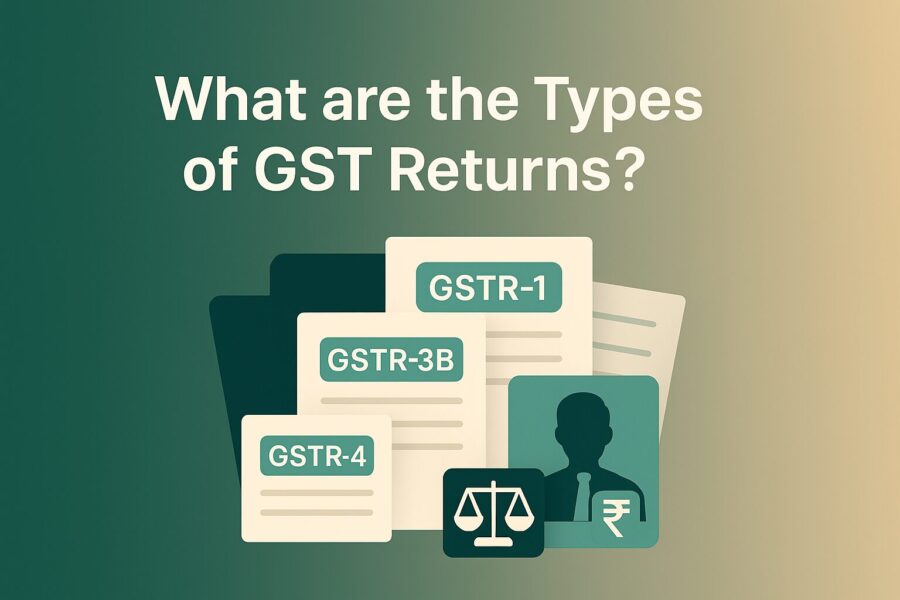
13 types of GST returns cover the various aspects of a taxpayer's transactions and liabilities within the GST regime. However, not all of the returns shall be applicable to each and every taxable person. The applicability of such returns shall depend on the taxpayer type and the GST registration.
Here is a list of the 13 GST return types and the associated GST return due date:
- GSTR-1: Outward Supplies Return
Businesses are required to file GST returns, the GSTR-1 in particular, reporting all the necessary details of outward supplies of goods/services. It also includes debit/credit notes and invoices which are issued for the transactions related to sales during a specific tax period. GST-registered normal taxpayers, including casual taxable persons, are required to file GSTR-1.
Frequency of Filing Due Date
Monthly Returns By the 11th of each month for businesses that have an annual aggregate turnover above Rs. 5 crore; or for all those who are not under the QRMP scheme
Quarterly Returns By the 13th of each month following the quarter for businesses that are under the QRMP scheme.
- GSTR-2A: Dynamic View-Only Return
GSTR-2A is essentially a dynamic return which can only be viewed. It is designed for recipients/buyers of goods/services. The form contains details of all the inward supplies or purchases from GST-registered suppliers within a specific tax period. GSTR-2A auto-populates with data on the basis of the suppliers' inputs for GSTR-1 returns. The data specified through the Invoice Furnishing Facility (IFF) for QRMP scheme taxpayers is also referred to.
Due date: not applicable; auto-generated and resorted to for reconciliation
2. GSTR-2B: Static View-Only Return
GSTR-2B, on the other hand, is a static return type which is view-only in nature. It was introduced in the month of August 2020. This return form offers stable ITC data from the GSTR-1 filings for the preceding month. It further aids buyers in reconciling their ITC claims for specific tax periods. GSTR-2B extends guidance on the actions which are to be taken for the reported invoice (this may include ineligibility, reversal, or being subject to reverse charge).
Due date: Not applicable
3. GSTR-2: Suspended Return
GSTR-2 allows for editing. It is presently a suspended GST return which was initially designed for registered buyers who have to report their inward supplies of goods/services within a specific tax period. Filing of the GSTR-2 has been suspended since the month of September 2017. Otherwise, the data in GSTR-2 was supposed to auto-populate with information from GSTR-2A.
Due Date: Not applicable
4. GSTR-3: Suspended Return
GSTR-3 is another suspended GST return. It was a ‘monthly summary’ return meant for normal taxable persons. The form provided information regarding outward supplies, inward supplies, tax liabilities, input tax credit claimed and taxes paid - in a summarised manner. GSTR-3 used to be auto-generated on the basis of the information input in GSTR-1 and GSTR-2 returns. But it has also been suspended since 2017.
Due date: Not applicable
5. GSTR-3B: Summary Return
Form GSTR-3B is a self-declaration return designed for normal taxpayers. This monthly form contains details of:
● Outward supplies,
● Input tax credit claimed,
● Tax liability; in a summarised manner.
Sales reconciliation as well as input tax credit information with GSTR-1 and GSTR-2B are important before the filing of GSTR-3B.
| Frequency of Filing | Due Date |
| Monthly Returns | By the 20th of the upcoming month for taxable individuals with an annual turnover above Rs. 5 crore |
| Quarterly Returns | ● 22nd of the month which follows the quarter for the 'X' group of states● 24th of the month which follows the quarter for the 'Y' group of states; for taxpayers have an aggregate turnover below or equal to Rs. 5 crore (for ones who remain opted a part of the QRMP scheme). |
6. GSTR-4: Composition Scheme Return
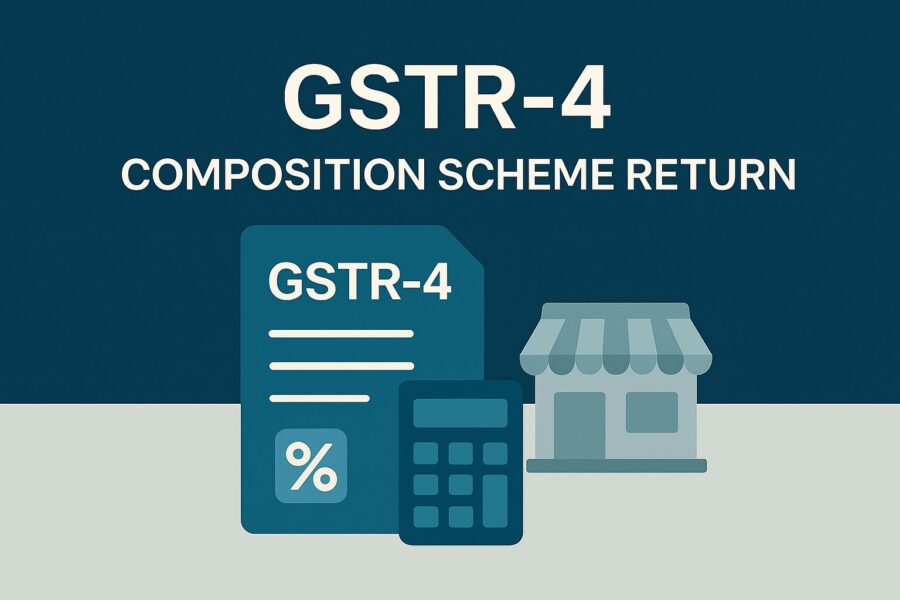
The annual return, GSTR-4, is meant for taxpayers under the Composition Scheme. It is required to be filed by the 30th of April of the year which follows the current financial year. GSTR-4 has replaced the quarterly filing requirement which was applicable before.
At present, taxpayers can file a challan in Form CMP-08. The Composition Scheme lets enterprises deal in goods with up to Rs. 1.5 crores turnover. They are supposed to pay taxes at a fixed rate on the declared turnover. Service providers may avail of a similar scheme, given that their turnover goes up to Rs. 50 lakh.
Due date:
This return is due on the 18th of the month which follows the end of the quarter.
7. GSTR-5: Non-Resident Foreign Taxpayer Return
Non-resident foreign taxpayers registered under GST, who conduct business transactions in India, may file GSTR-5. The return shall mention important information regarding:
● Credit notes
● Debit notes
● Outward supplies
● Inward supplies
● Taxes paid
● Tax liability
Due date:
This return is due by the 20th of each month.
8. GSTR-5A: OIDAR Services Return
GSTR-5A is a return which summarises "Online Information and Database Access or Retrieval Service (OIDAR) providers" under the GST regime.
Due date:
This is due on the 20th of each month.
9. GSTR-6: Input Service Distributor Return
GSTR-6 is a return type that is filed monthly by the Input Service Distributors (ISD). It reports:
● Input tax credit (ITC) received as well as distributed.
It also mentions document details issued for:
● ITC distribution
● The manner of distribution
Due date:
The due date for GSTR-6 filing is the 13th of every month.
10. GSTR-7: TDS Return
GSTR-7 is filed by entities which are required to deduct TDS (Tax Deducted at Source) under GST. It is done every month. The return consists of details like:
● Deducted TDS
● TDS liability payable/paid
● TDS refunds claimed
Due date:
The due date set for the filing of GSTR-7 is the 10th of every month.
11. GSTR-8: E-commerce Operator Return
GSTR-8 is filed by e-commerce operators who are registered under GST. It is a monthly return. It is specifically required by the person filing and by those who are required to collect tax at source (TCS). It includes information regarding supplies made via the e-commerce platform and TCS collected.
Date date:
The due date settled upon for the filing of GSTR-8 is the 10th of every month.
12. GSTR-9: Annual Return
GSTR-9 is an annual return which is to be filed by taxable persons registered under GST. GSTR-9 comprises details of:
● Outward supplies
● Inward supplies
● Taxes paid
● Taxes are payable as per separate tax heads (CGST/ SGST/ IGST).
There are exceptions to GSTR-9 filing, which include:
● Taxpayers under the composition scheme
● Casual taxable persons
● Input service distributors
● Non-resident taxable persons
● Persons who are to pay TDS under the CGST Act, section 51
Due date:
The return is due by the 31st of December of the year which follows a specific financial year.
13. GSTR-9C: Reconciliation Statement
GSTR-9C is a reconciliation statement which is self-certified. It must be filed by any registered person under GST whose turnover goes over Rs. 5 crore during a specific financial year. Several GSTR-9C forms may be filed under a single PAN. This is because it is filed for each GSTIN.
Due date: The deadline for the filing of GSTR-9C is 31st December of the year which follows a specific financial year.
14. GSTR-10: Final Return
A taxable person whose registration is cancelled/surrendered shall file GSTR-10. The return is also known as a final return.
Due date:
GSTR-10 must be filed within 3 months, starting from the date of cancellation/cancellation order (whichever comes before).
15. GSTR-11: UIN Holder Return
Individuals who have been issued the Unique Identity Number (UIN) to claim a refund under GST against the goods/services they've bought in India, shall file GSTR-11. UIN is essentially a categorisation established for foreign diplomatic missions/embassies which are not liable to tax in India. It is done with the purpose of claiming a tax refund. GSTR-11 shall consist of information about inward supplies received as well as the refund claimed.
Due date: The return due date is the 28th of the month which follows the month in which the UIN holders receive the inward supply.
Consequences of Late Filing of GST Returns
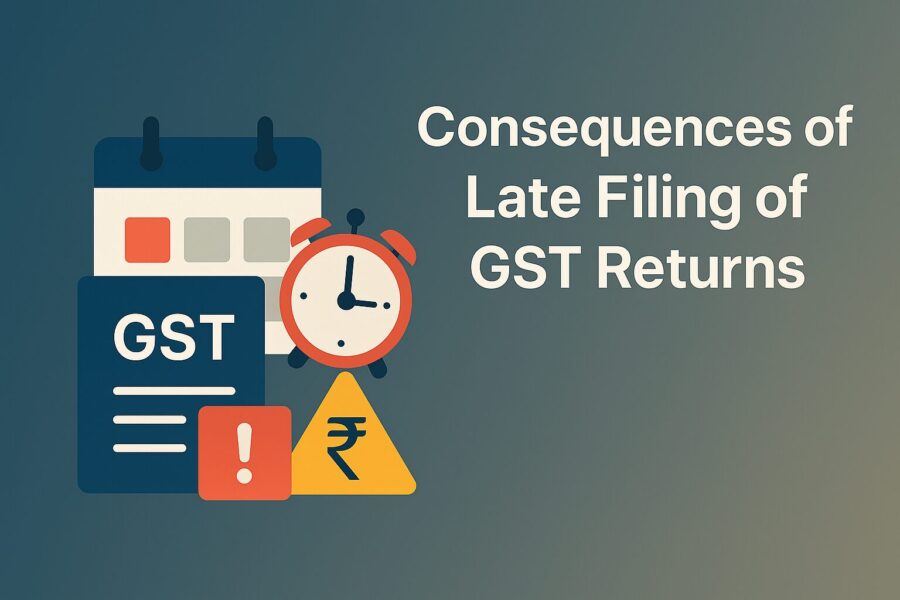
Filing of returns is mandatory under GST in India. Even in case there is no transaction, individuals must file a Nil return. Note that:
● One cannot file a return if they don’t file the preceding month or quarter return;
● Late filing of the GST return shall have a cascading effect which will inevitably lead to the accumulation of fines/penalties;
● The late filing fee associated with GSTR-1 is populated in the GSTR-3B liability ledger filed after the delay.
Interest & Late Fee to be Paid
Here are the interest and late charges which apply in the case of late GST return filing:
● The applicable interest is 18%, annually. It is supposed to be calculated by the taxable person on the outstanding tax amount that is to be paid. The amount may be calculated on the net tax liability as identified in the ledger when it's time to make the payment. The time period starts from the following day of the filing due date, up until the actual payment date.
● According to the CGST Act, the applicable late fee per day, per Act, is Rs.100. This means, the total amount is arrived at by adding Rs.100 under SGST and Rs.100 under CGST. The total amount payable shall be Rs.200 per day. Note that there is a maximum limit of levying Rs.5,000 for each Act. No late fee is prescribed under the IGST Act.
In the case of GSTR-9/9C, the maximum late fee per Act is 0.25% of the turnover in UT/the state. It is important to note that the amount of late fees may be reduced due to certain government-supported relief schemes. Make sure to check individual return pages and keep up with the latest late charges.
Conclusion
Staying up to date with GST return due dates and understanding the different types of forms is crucial for businesses in order for them to maintain compliance and avoid hefty penalties. The different types of GST returns, including the GSTR-1, GSTR-3B, GSTR-9, etc., all serve distinct purposes and have varying due dates associated.
Businesses should familiarise themselves with such requirements to ensure accurate filing in a timely manner. This way, the risk of fines is minimised and GST obligations are adhered to.
💡If you want to streamline your payment and make GST payments via credit, debit card or UPI, consider using the PICE App. Explore the PICE App today and take your business to new heights.







